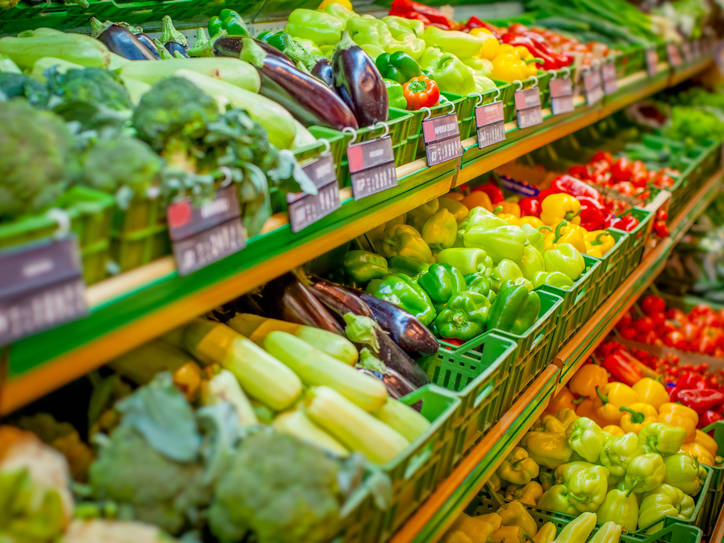The “Buy Canadian” movement is gaining momentum in Canada’s grocery stores, with many retailers highlighting homegrown products through bold labels, prominent displays, and advertising campaigns. Consumers are noticing the shift, as supermarket giants push Canadian-made items to the forefront.
A recent ad campaign by Sobeys proclaimed, “All the best things have always been made here. All we had to do was look,” underscoring its commitment to showcasing local products in light of a tariff war with the U.S. The appeal to Canadian pride resonates, but customers are increasingly demanding convenience in finding these products.
While some shoppers are willing to dig through labels or track down Canadian-made items, this approach could quickly lose its charm, according to Tandy Thomas, an associate professor of marketing at Queen’s University. “If every decision requires extra time in the grocery aisle to decipher labels, it will become too much for consumers,” Thomas said. For the movement to thrive long-term, stores must make Canadian products easy to identify.
Retailers Capitalize on Rising Demand for Canadian Products
Major grocery chains have been adjusting their marketing strategies to cater to the growing demand for Canadian-made items. Amid price increases and a fractured relationship between shoppers and stores, grocers are seizing the opportunity to reshape their reputations.
Loblaws, for example, is preparing shoppers for higher grocery bills as tariffs impact pricing. The company is introducing a triangular “T” label to indicate products affected by tariffs. Once the tariffs are lifted, the prices will return to normal. Loblaws’ CEO, Per Bank, explained the company’s increased focus on Canadian products in-store, in promotional materials, and online, allowing customers to choose Canadian alternatives through its PC Express delivery platform.
Although Loblaws is also offering rewards points for Canadian-made items, the details of this promotion remain unclear. Despite reaching out for an official comment, News did not receive a response from the company.
Other retailers, including Sobeys (which operates FreshCo, Safeway, and IGA) and Metro, have also ramped up efforts to feature local products prominently. However, inconsistencies in labeling have raised concerns. A recent investigation revealed that Sobeys mislabeled some products, like maple syrup, with the iconic red maple leaf, but didn’t apply the same labeling across all Canadian maple syrup brands.
Scrutiny Over Labeling Accuracy
Shoppers have become increasingly vigilant about labeling, and the Canadian Food Inspection Agency (CFIA) has seen a rise in complaints regarding country-of-origin claims. In February alone, 23 complaints were filed, compared to just five between November and January. The CFIA is currently reviewing these complaints to determine if any violations have occurred, but it is still too early to make any definitive conclusions.
The Reputation Reset After Summer Boycotts
For some grocery chains, the Buy Canadian movement offers a chance to recover from last summer’s consumer boycotts aimed at Loblaws, Sobeys, and Metro, which were sparked by rising food prices. According to Tim Dewhirst, a professor at the University of Guelph, the focus has now shifted away from these boycotts and onto the broader political and economic tensions with the U.S.
“Consumers are redirecting their anger towards American brands, particularly as U.S. policies under President Trump raised concerns,” Dewhirst explained. However, he also warned that Canadians have long memories. During the height of inflation, shoppers accused major grocers of price gouging, although company executives denied the allegations.
“With geopolitical tensions and tariff threats, it’s expected that prices will rise,” Dewhirst noted. “The lack of competition among grocery chains in Canada has often led to concerns about price gouging.”
A Smaller Grocer Takes a Different Approach
Not all grocers are jumping on the Buy Canadian bandwagon. Mike Soufan, the owner of Calgary-based grocery wholesaler Freestone, said that a small group of his customers have requested Canadian products but that he doesn’t plan to launch a marketing campaign focused on these items. “People ask if it’s Canadian, but the majority just care about the price,” Soufan said.
Soufan is more concerned with managing the cost of imported goods, particularly with the Canadian dollar’s weakness, than he is about tariffs on U.S. products. He plans to work with his suppliers and trucking companies to keep costs manageable for his customers.
While large grocery chains embrace the Buy Canadian movement as a marketing opportunity, smaller grocers like Freestone are taking a more cautious approach, balancing the desire to support local products with the realities of international sourcing and pricing.







